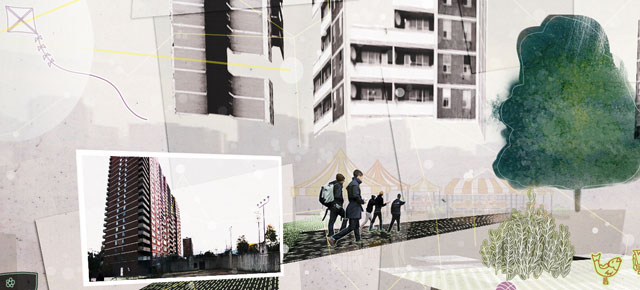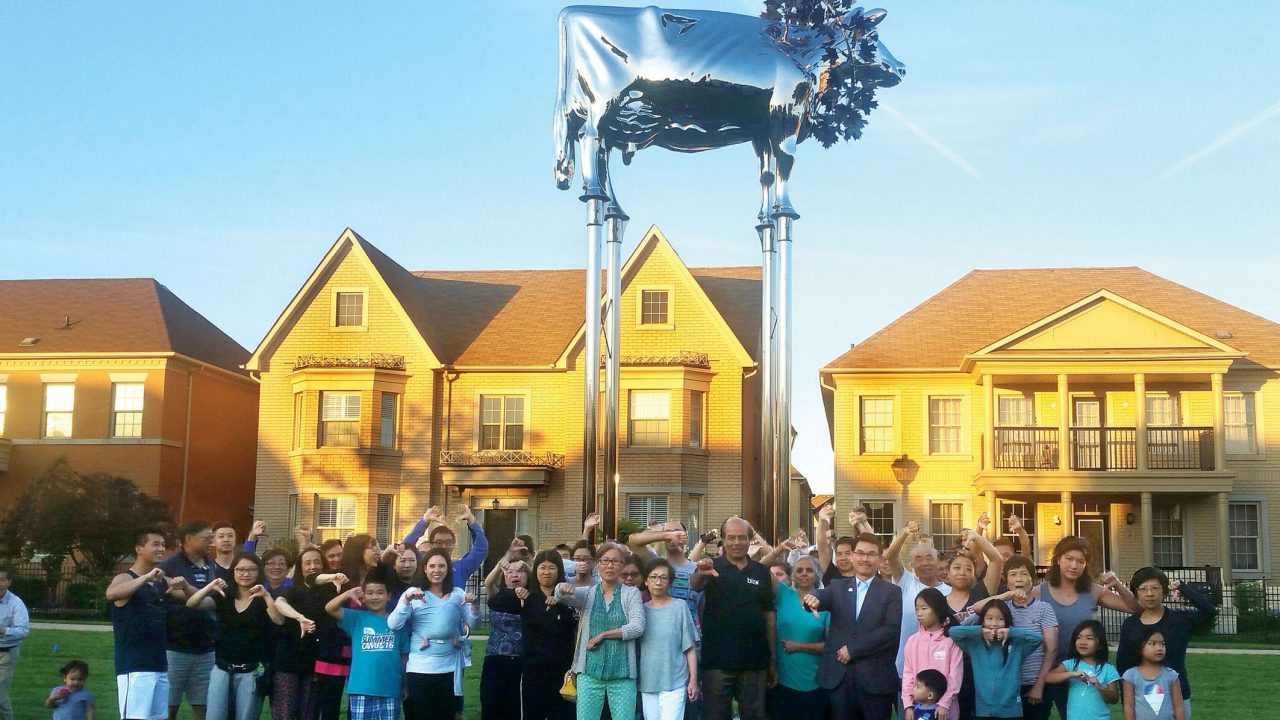
New HIGHRISE documentary takes form to new heights
New HIGHRISE documentary takes form to new heights
I used to dislike highrise buildings. I would drive by them, without much thought, and dread the elevator when I actually had to go inside.
These days, I spend most of my time thinking, living, breathing highrises. I’m the director of NFB’s Emmy-award winning HIGHRISE, and last week we launched our latest incarnation, called One Millionth Tower.
It’s a web-native documentary, and we use new technologies to explore the problems with aging highrise buildings.
We premiered at the Mozilla Festival in London UK, and co-launched on-line with the prestigious technology publication wired.com, who reported that we’ve “Re-invented the documentary format… the resulting film is unlike any before it.”
For One Millionth Tower, we go “hyper-glocal:” we tell a local story about two sister highrise buildings in suburban Toronto, but our approach and message has global resonance.
I was really touched when Priti, one residents we work with, told us “You may just drive-by and see an ugly building, but for us, this is our home.”
Over a billion of us live in deteriorating apartment buildings, and in One Millionth Tower, we wanted to discover how harnessing the spirit of the people who live inside can help re-imagine the bleak highrise landscape, anywhere in the world.
“Too often we blame the buildings. It’s really about the system around the buildings. What can we do to improve that?” says ERA Architect Graeme Stewart, whose generative work on Tower Renewal has inspired much of the overall HIGHRISE project.
The idea in One Millionth Tower is to bring together residents, architects, animators and a web developers to tell the story of speculatively transforming physical space in a 3d virtual landscape — directly in the browser.
The Atlantic Cities publication notes “The ongoing collaborative aspects, through the amazing interfaces Cizek and her team have created, are surprising and enlightening.”
It all started when our HIGHRISE community-media documentarians, Heather Frise and Maria-Saroja Ponnambalam, gathered Faith, Ob, Donna, Priti and Jamal, all residents of the highrise, together with Graeme and his team of architects to draw and to re-imagine the spaces around the highrises as vibrant active places. Soon, animators Howie Shia, Lillian Chan and Kelly Sommerfeld brought the illustrations to cinematic life.
Then, using brand new technology called webGL, and Popcorn, new software inspired by Mozilla, Mike Robbins of Helios Design Lab, radically transformed the whole project. He helped us craft a documentary in 3d space that lives and breathes like the web. For example, when it’s raining at the Toronto highrise for reals, it is raining in One Millionth Tower.
“It is a story about space,” Mike says, “so I thought why not put it in 3d space?”
Pulling together so many technical and human innovations involved 24/7 piloting by Associate Producer Sarah Arruda and Technical Director, Branden Bratuhin.
“Our iterative process was complicated, and it was successful only because true passion and commitment from every member of the team,” says Sarah.
“One Millionth Tower is a prime example of the work we are doing together to empower makers and build tools that anyone can use to make awesome things happen — on the Web and in the world. It’s a testament to how we are building a better Web together,” says Mark Surman, Executive Director of the Mozilla Foundation.
The same can be said for building a better city. How can we all be part of building and re-building rethinking the cities and infrastructures that defines us now as an urban species?
“The highrise building for us is a great storytelling prism. It’s a metaphor, and it’s a way for us to address ‘the future of cities’ in a concrete, human way,” says Gerry Flahive, the Senior Producer who leads our productions through “formats that haven’t been invented yet.”
With music composed by Toronto’s own visionary Jim Guthrie, including a sonata by Owen Pallett, and sound design by Timothy Muirhead, the collaged “mixed tape” approach to the soundscape adds more poetic reference to collaborative nature of the project.
The inspiration has not stopped on the web. Due in part to the documentary process, and mostly because of all the great community organizing that’s been happening on site (the residents themselves, the United Way, ERA Architects and the City of Toronto) there’s been real on the ground impact that’s come from the “imaginings” of the documentary.
Last summer, as we were still completing the virtual work, the residents won a grant that brought a playground “built-in-a-day” to the site, through Kaboom, a non-profit that brings back play to neighbourhoods in need.
“It’s because of the One Millionth Tower,” says Donna, one of the residents instrumental in the project.
“Because the residents had done two years of organizing,” says Elise Hug of the City of Toronto, “They were able to put in the application in a week and a half.”
“In One Millionth Tower, my mother blows seeds around,” says Jamal, who has grown up in the building and worked on the project, “it’s very symbolic.”
When we picked up the NFB’s first Webby for our Filmmaker-in-Residence project in 2006, we used five words to accept the statue: “The internet is a documentary.” By that I meant that what we do on the web as citizens is at its core, documentary: we creatively interpret our actuality.
Today, five years later, as we launch One Millionth Tower, I am surprised to flip those words around: ‘Documentary is becoming the web.’



